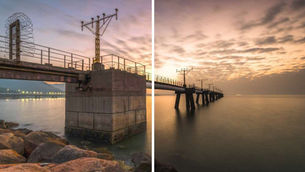top of page


MJPEG vs MPEG4 – Which is Superior for Embedded Camera?
MJPEG compresses each frame individually for higher quality per image but uses more bandwidth. MPEG-4 offers better compression by encoding motion between frames, making it more efficient for embedded camera applications requiring smoother video and reduced data usage.

Vadzo Imaging
Dec 11, 20234 min read


Which Compression Technologies is Ideal: MJPEG Camera vs H.264 Camera?
MJPEG cameras compress each frame as a separate JPEG image, offering simplicity and quality per frame but higher bandwidth. H.264 cameras use inter-frame compression for lower bandwidth and smoother video, making them ideal for real-time and networked applications.

Vadzo Imaging
Jul 17, 20234 min read


Reasons behind LED Flickering and how LED Flicker Mitigation works
LED flicker impacts image quality. Mitigation techniques help reduce its effects on cameras and benefit various industries.

Vadzo Imaging
Jul 10, 20236 min read


H.265 Video Compression – A Game-Changer for GigE Camera Performance
H.265 (HEVC) offers improved video compression over H.264, delivering higher quality at lower bitrates. For GigE cameras, this means more efficient streaming, reduced bandwidth usage, and better performance in high-resolution or multi-camera setups.

Vadzo Imaging
Jun 21, 20233 min read


Understanding the H.264 Video Coding System, Its Benefits, and Its Uses for GigE Camera
The H.264 video coding system efficiently compresses video without significant quality loss, reducing bandwidth and storage needs. For GigE cameras, it enables high-resolution, real-time streaming ideal for surveillance, machine vision, and industrial applications.

Vadzo Imaging
Jun 9, 20233 min read


Multi Exposure HDR: Capturing the Full Range of Light with HDR Cameras
Multi-exposure HDR captures multiple images at varying exposure levels and combines them to produce a single image with balanced brightness and detail. This technique enhances an HDR camera’s ability to handle high-contrast scenes with clarity and accuracy.

Vadzo Imaging
May 24, 20234 min read


Understanding Auto-Framing, How It Works, and How It has Advanced for Autoframing USB Camera
Auto-framing dynamically adjusts a camera’s field of view to keep subjects centered and in focus. In autoframing USB cameras, advanced algorithms and AI enhance tracking, making them ideal for video conferencing, presentations, and smart surveillance.

Vadzo Imaging
Apr 20, 20235 min read


PDAF vs CDAF: Understanding Autofocus in Embedded OEM Cameras
The autofocus camera is crucial in various applications, employing phase & contrast detection. It is more accurate and affordable.

Vadzo Imaging
Dec 12, 20223 min read


Understanding Exposure Compensation – How it is helpful
Exposure compensation allows you to manually adjust a camera’s automatic exposure settings, making images brighter or darker as needed. It’s especially useful in tricky lighting conditions to achieve balanced, well-lit photos.

Vadzo Imaging
Oct 10, 20224 min read


Understanding White Balance: How to Choose the Correct Color Tone for Your Photograph
White balance adjusts the color tone of an image to ensure whites appear neutral under different lighting conditions. Correct white balance brings natural color accuracy to photographs by compensating for warm or cool light sources.

Vadzo Imaging
Sep 8, 20226 min read


Tone Mapping: Enhancing Your HDR Images for Greater Impact
Tone mapping is a process used to convert high dynamic range (HDR) images into a format suitable for standard displays, preserving details in both highlights and shadows. It enhances contrast and visual appeal for more impactful imagery.

Vadzo Imaging
May 25, 20224 min read


Dynamic Range in HDR USB Cameras: A Guide to Help You Take the Perfect Picture
Dynamic range in HDR USB cameras allows for balanced image capture by retaining details in both shadows and highlights, ensuring clear, high-quality visuals in challenging lighting conditions.

Vadzo Imaging
May 17, 20226 min read


3A Algorithm Explained: Auto Focus, Auto Exposure, and Auto White Balance
The 3A algorithm—Auto Focus (AF), Auto Exposure (AE), and Auto White Balance (AWB)—automatically adjusts camera settings for sharpness, brightness, and color accuracy. It ensures optimal image quality across varying scenes and lighting conditions.

Vadzo Imaging
Apr 21, 20225 min read


Image Signal Processing: Insights into Image Enhancement Techniques
Image Signal Processing algorithms refine raw sensor data through techniques like noise reduction, white balance, and sharpening—delivering high-quality images in real time.

Vadzo Imaging
Feb 14, 20224 min read
Blog Insights
(Thoughts, trends, and tech in one place)
bottom of page